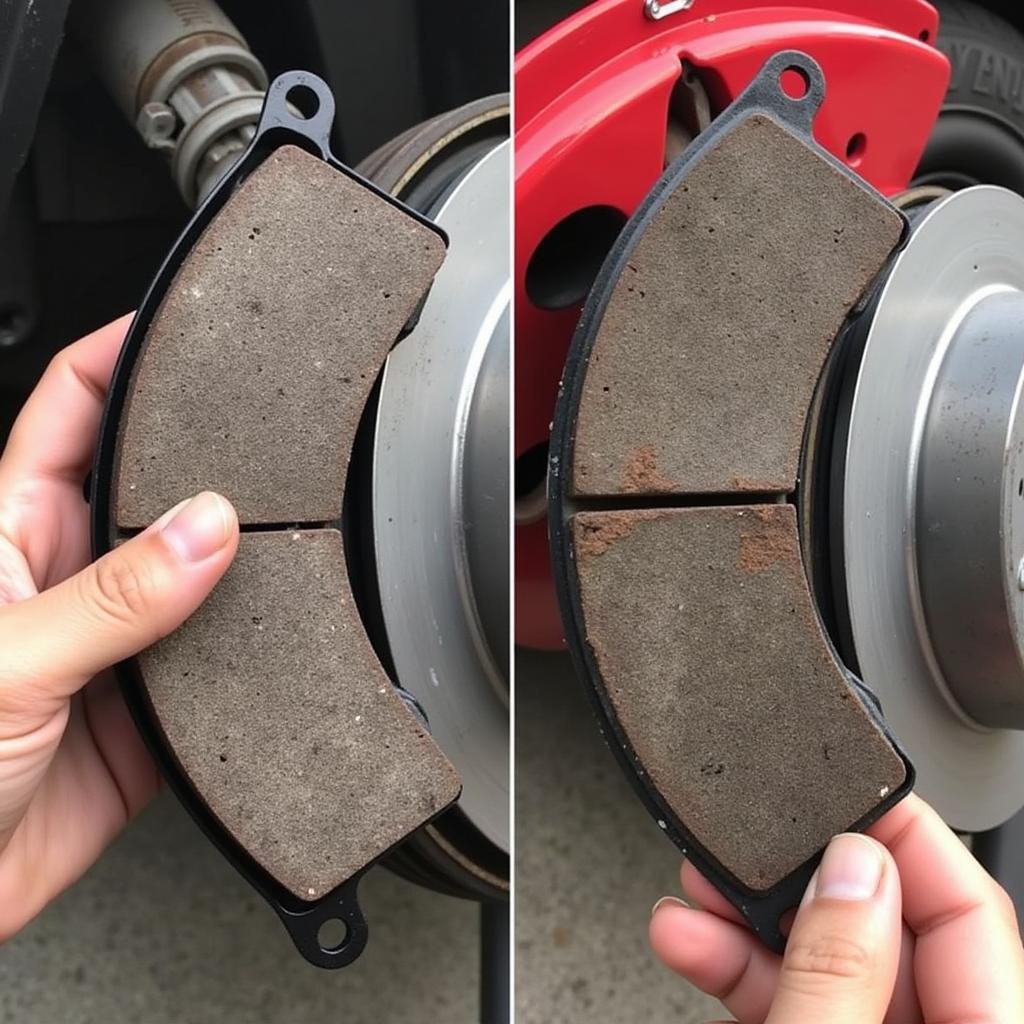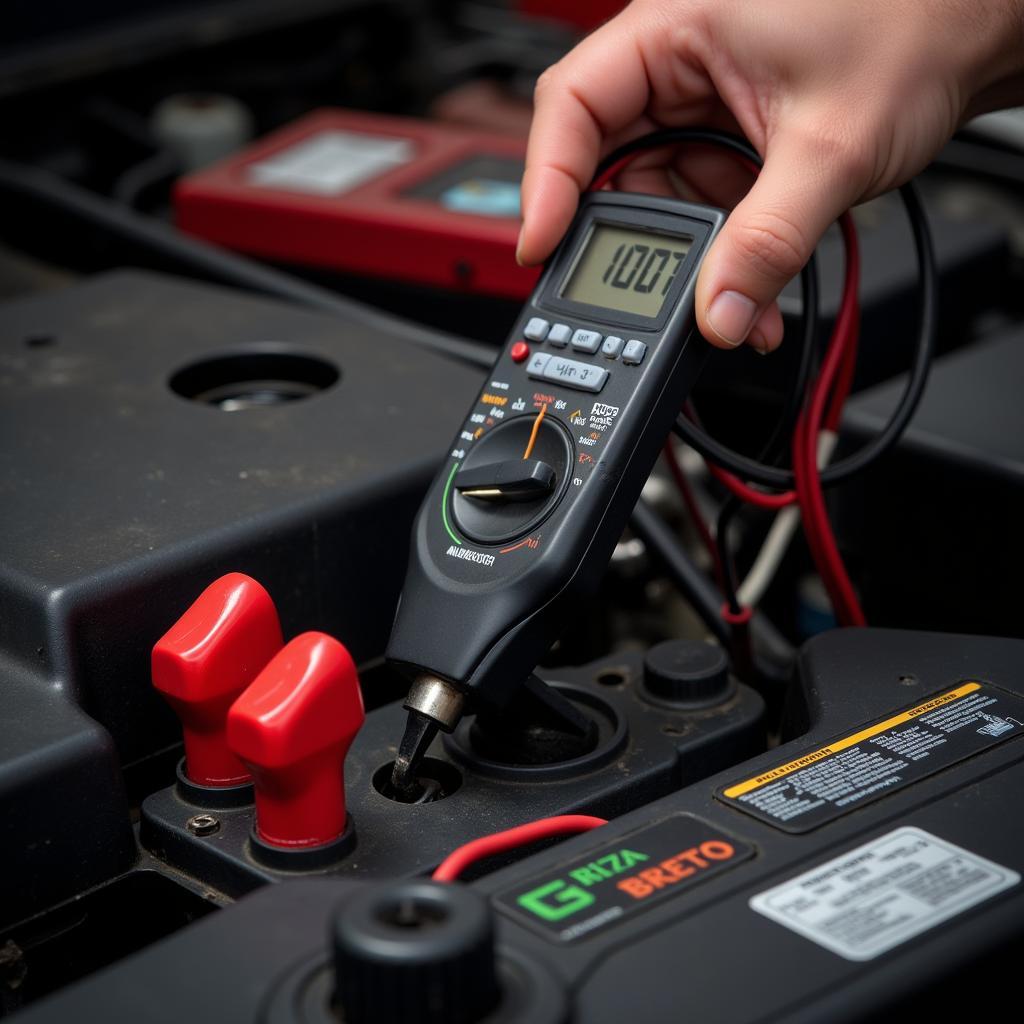Performing an automotive battery drain test is crucial for identifying parasitic draws that can leave you stranded. This guide dives deep into the process, offering expert advice, troubleshooting tips, and solutions for resolving battery drain issues.
Understanding how to perform an automotive battery drain test empowers you to diagnose and fix the problem yourself, saving you time and money. A draining battery can be caused by numerous factors, from faulty components to accidental lights left on. Identifying the culprit requires a systematic approach, which we’ll detail in this guide. Do you suspect your alternator is the issue? Check out this helpful article: is my alternator bad or my battery.
Why is an Automotive Battery Drain Test Important?
A dead battery is a common problem, but the underlying cause is often a parasitic drain. This means something in your vehicle is consuming power even when the car is off. This can range from a simple interior light left on to a more complex electrical fault. Ignoring a parasitic draw can lead to a dead battery, starting problems, and even damage to sensitive electronics.
How to Perform an Automotive Battery Drain Test
Performing a battery drain test doesn’t require advanced mechanical skills, but it does require careful attention to detail. Here’s a step-by-step guide:
-
Gather Your Tools: You’ll need a multimeter, preferably a digital one with a milliamp setting.
-
Prepare Your Vehicle: Turn off all accessories, lights, and the ignition. Close all doors and the trunk.
-
Disconnect the Negative Battery Cable: This isolates the battery from the vehicle’s electrical system.
-
Connect the Multimeter: Set your multimeter to the milliamp (mA) setting. Connect the red lead to the disconnected negative battery cable and the black lead to the negative battery terminal.
-
Observe the Reading: The multimeter will display the current draw in milliamps. A reading of 50mA or higher indicates a significant parasitic draw.
-
Locate the Source: Begin systematically removing fuses one at a time while observing the multimeter reading. When the reading drops significantly, you’ve identified the circuit with the parasitic draw. Consult your vehicle’s owner’s manual to determine which components are on that circuit.
Common Causes of Battery Drain
Several common culprits contribute to excessive battery drain. Understanding these potential issues can help you narrow down the source of the problem. Some common causes include:
- Interior Lights: A simple dome light left on can drain your battery overnight.
- Faulty Door Switches: A malfunctioning door switch can trick the car into thinking a door is open, keeping interior lights or other systems activated.
- Glove Box or Trunk Lights: Similar to interior lights, these can drain your battery if they stay on.
- Aftermarket Accessories: Improperly installed aftermarket accessories, like stereo systems or alarms, can draw power even when the car is off.
- Faulty Modules: Malfunctioning electronic modules, such as the body control module (BCM) or radio, can also be a source of parasitic drain. If you suspect a module issue, especially with your auxiliary battery, this article may be helpful: cla 250 auxiliary battery malfunction.
“A common mistake people make is assuming their battery is bad when it’s actually a parasitic draw,” says John Smith, Senior Automotive Electrical Engineer. “A simple battery drain test can often pinpoint the real problem and save you the cost of a new battery.”
Troubleshooting Tips
If you’re having trouble identifying the source of the drain, consider these tips:
- Check the Owner’s Manual: It contains valuable information about your vehicle’s electrical system and fuse box layout.
- Use a Wiring Diagram: A wiring diagram can help you trace the circuit connected to the faulty fuse.
- Consult a Professional: If you’re uncomfortable working with electrical systems, consult a qualified automotive technician. Some specific car models are known to have battery issues. For example, you can find helpful resources about the MG3 and Jeep Cherokee battery problems here: mg3 battery problems and 2019 jeep cherokee battery problems.
 Car Fuse Box Diagram
Car Fuse Box Diagram
Conclusion
Performing an automotive battery drain test is a valuable skill for any car owner. This comprehensive guide has equipped you with the knowledge and steps to diagnose and resolve parasitic draws, saving you from unexpected breakdowns and costly repairs. Regularly testing for battery drain can prolong the life of your battery and ensure your vehicle starts reliably every time. Don’t forget to check out our other helpful resource on car battery drain: something is draining my battery in my car. Regularly testing your car battery can save you time, money, and frustration in the long run.



